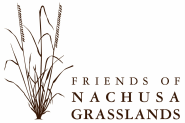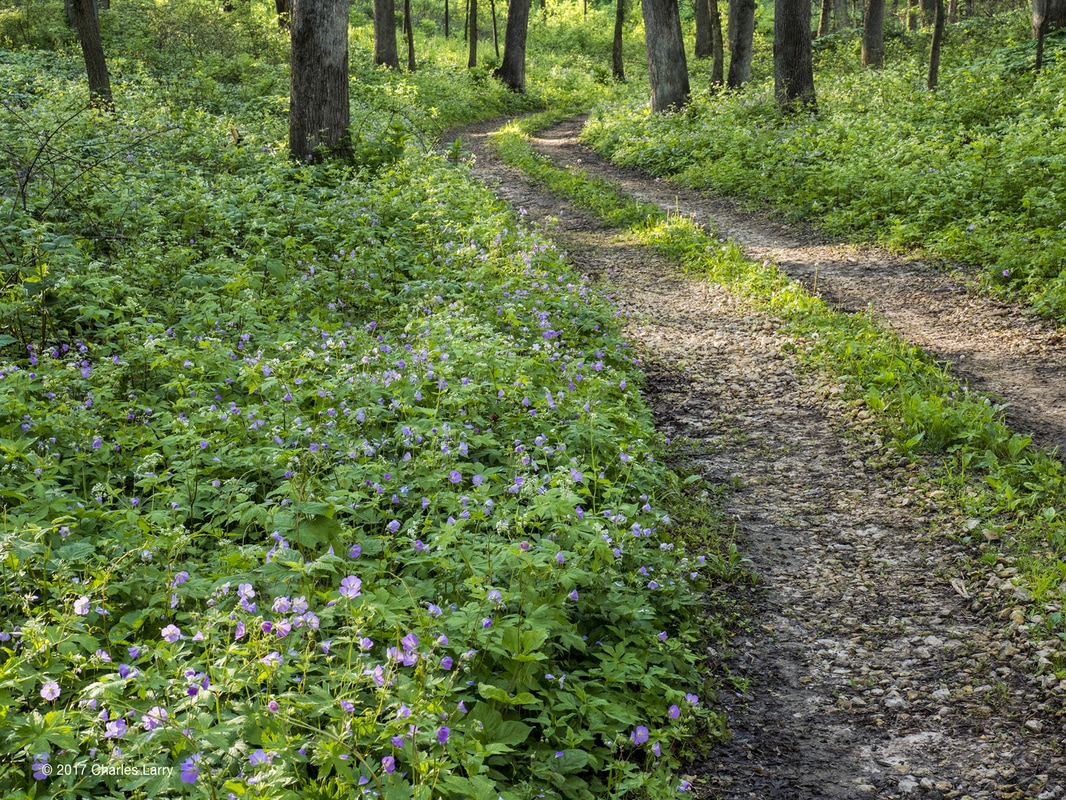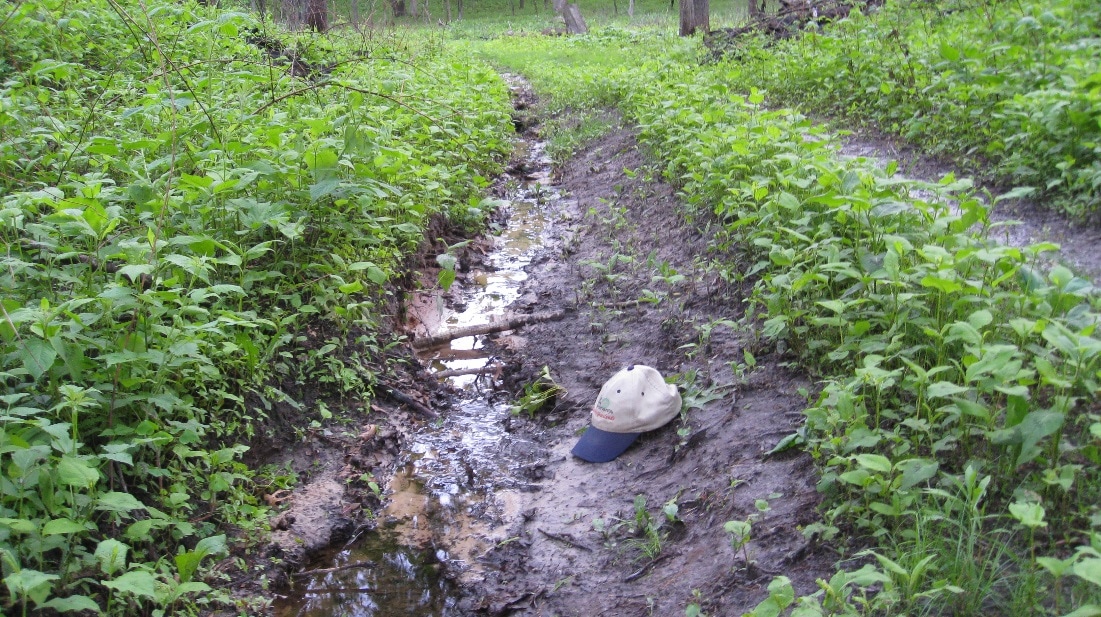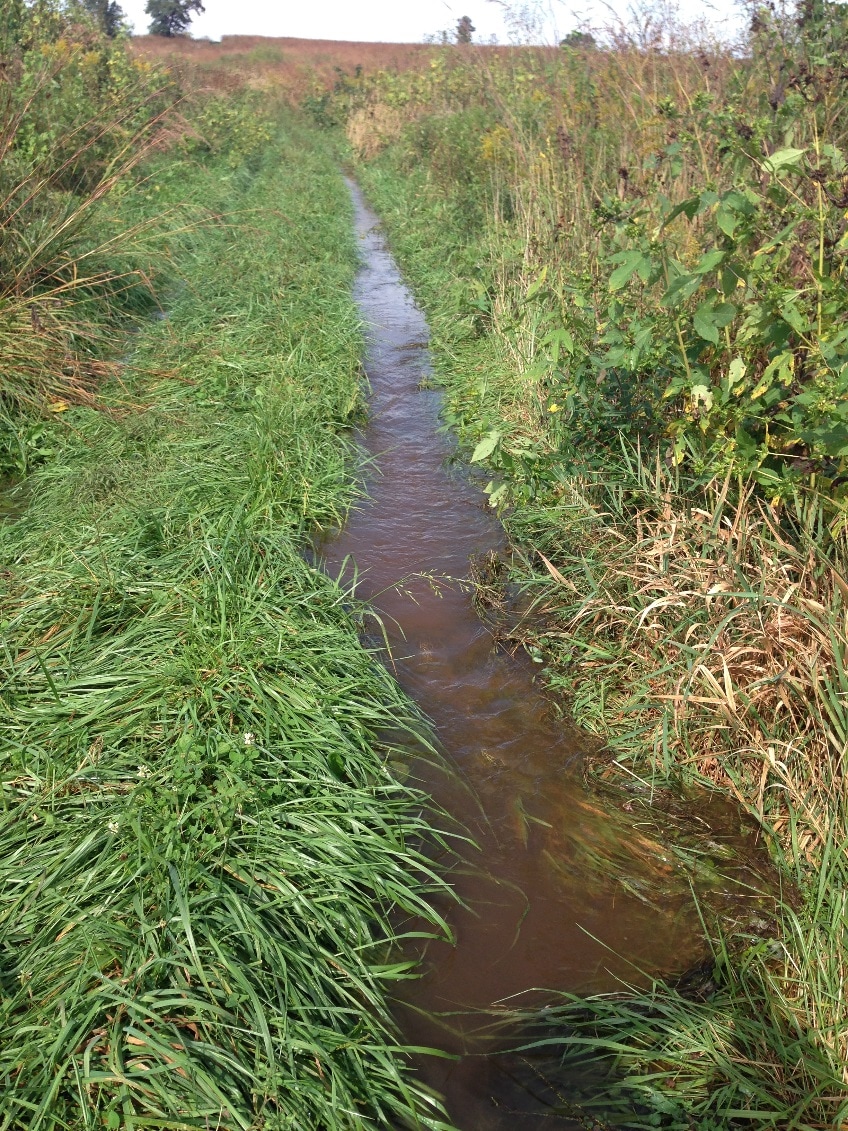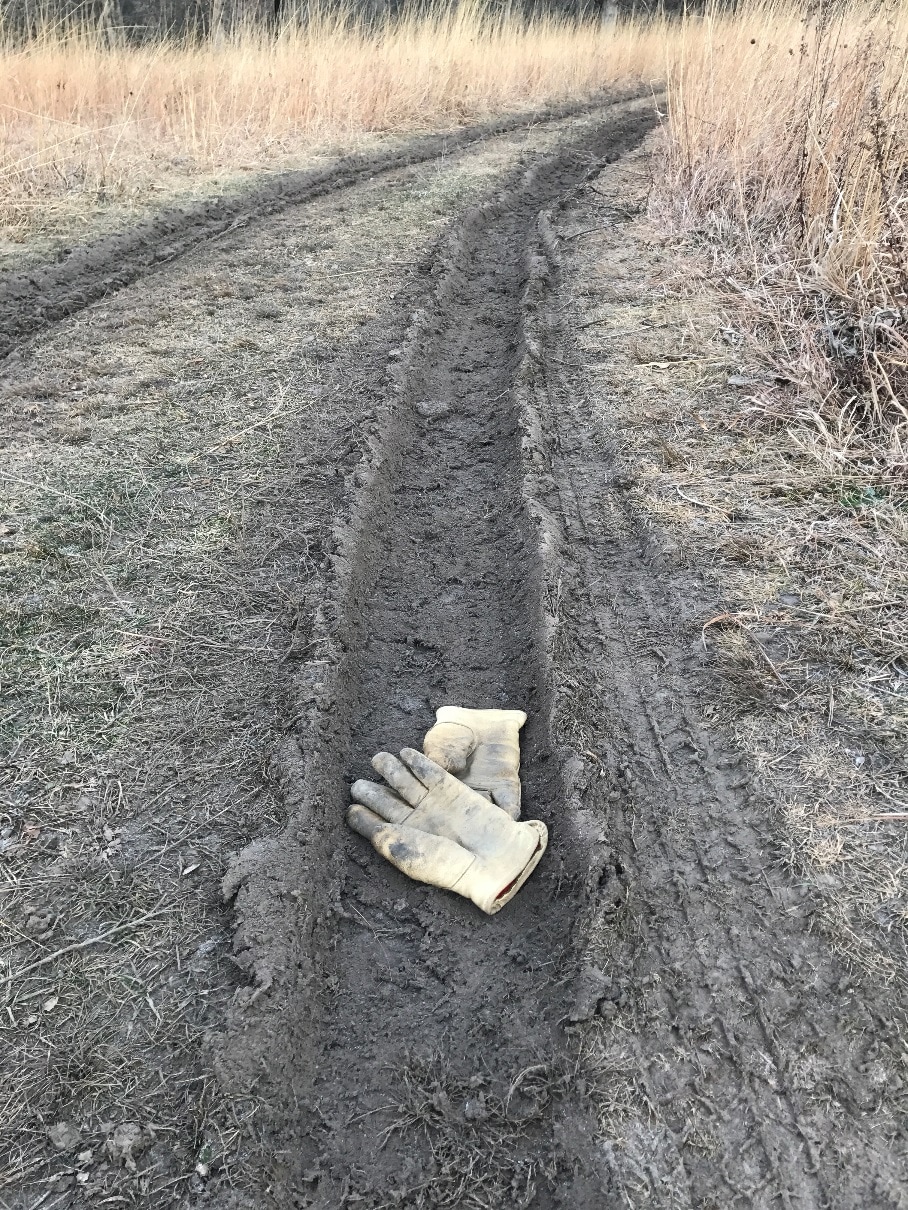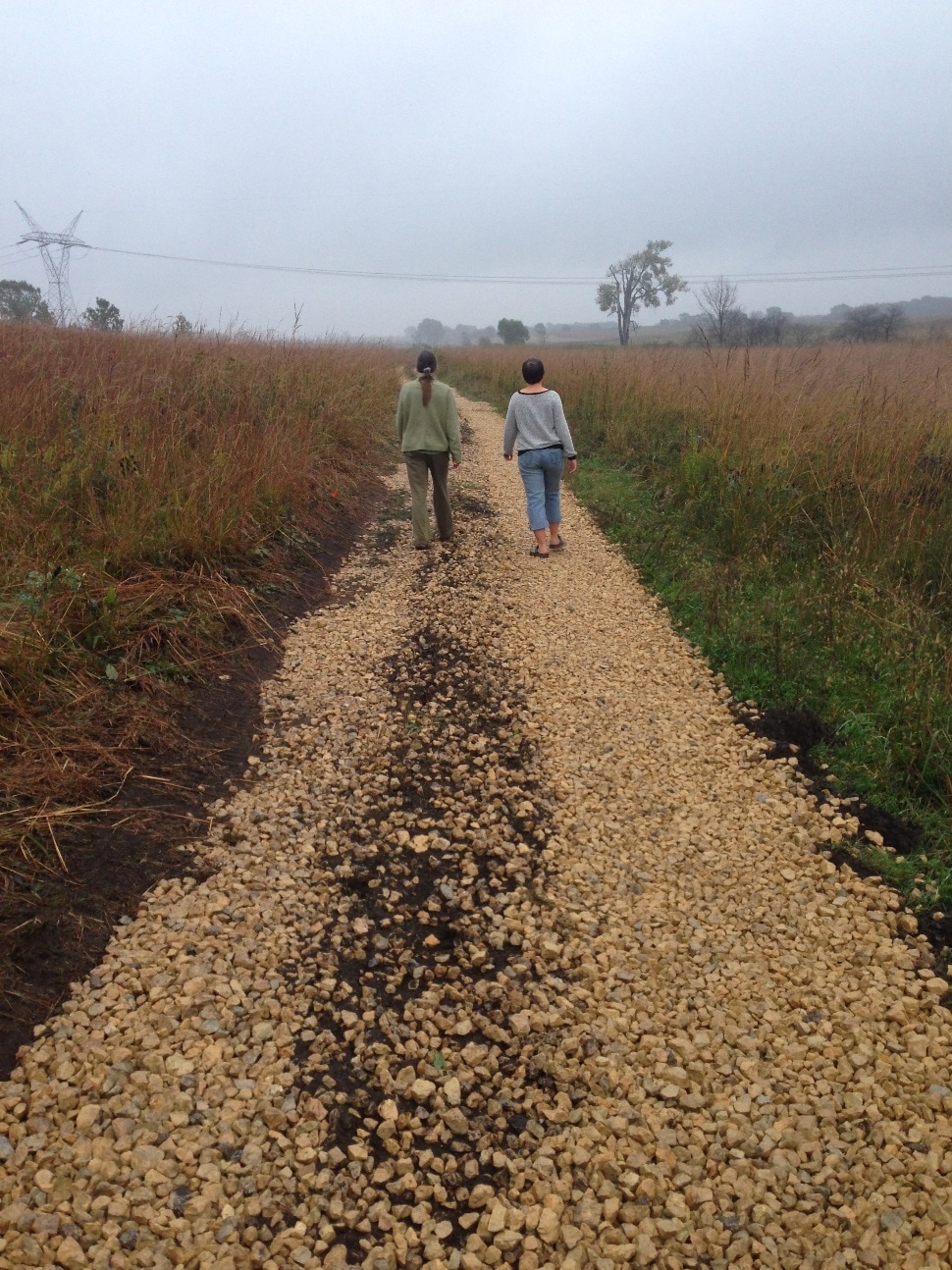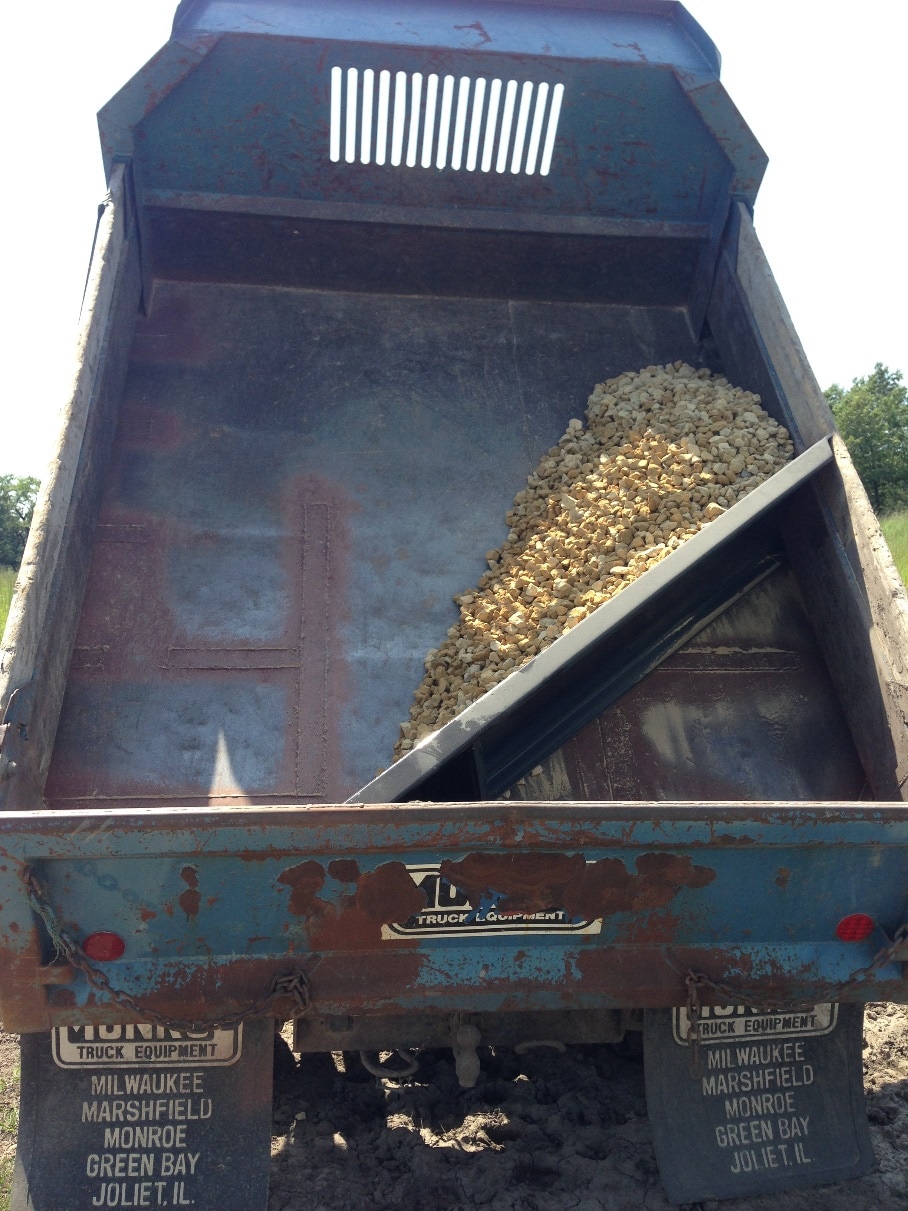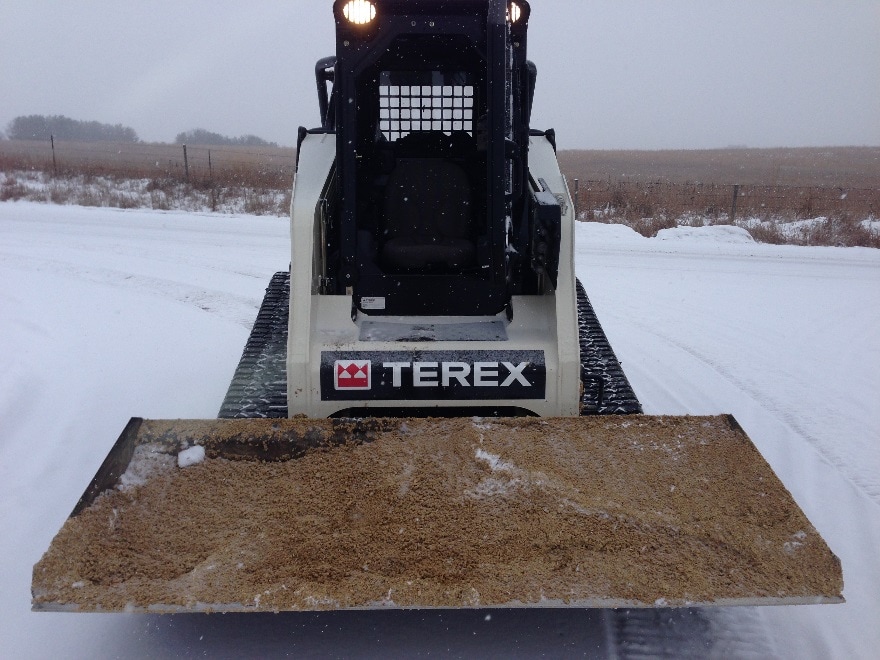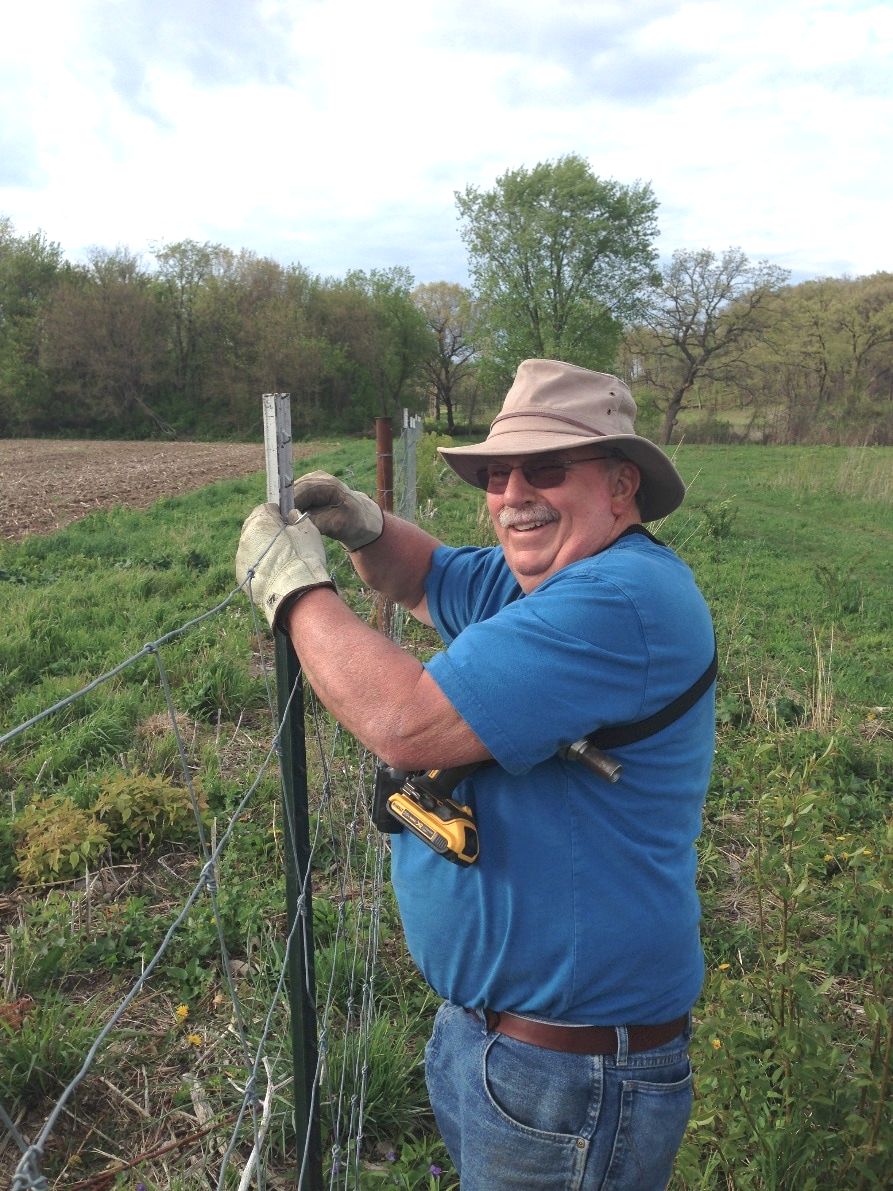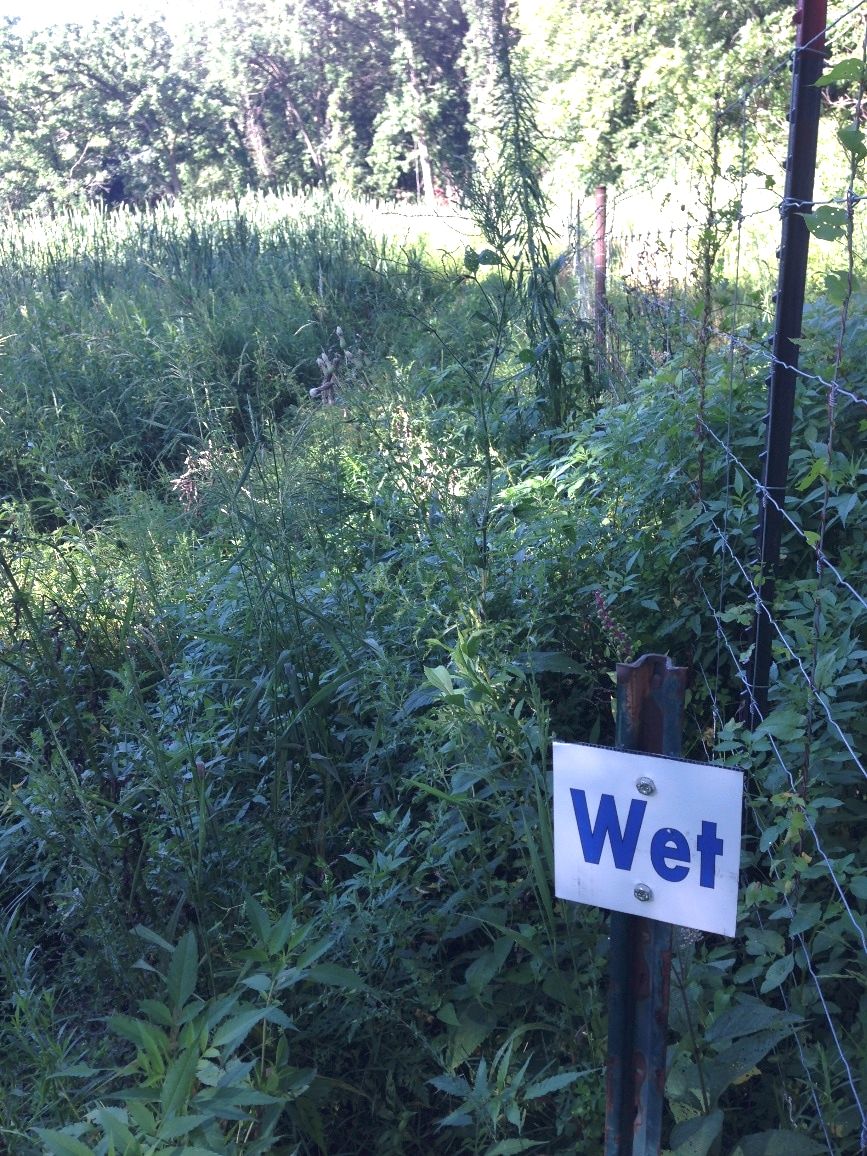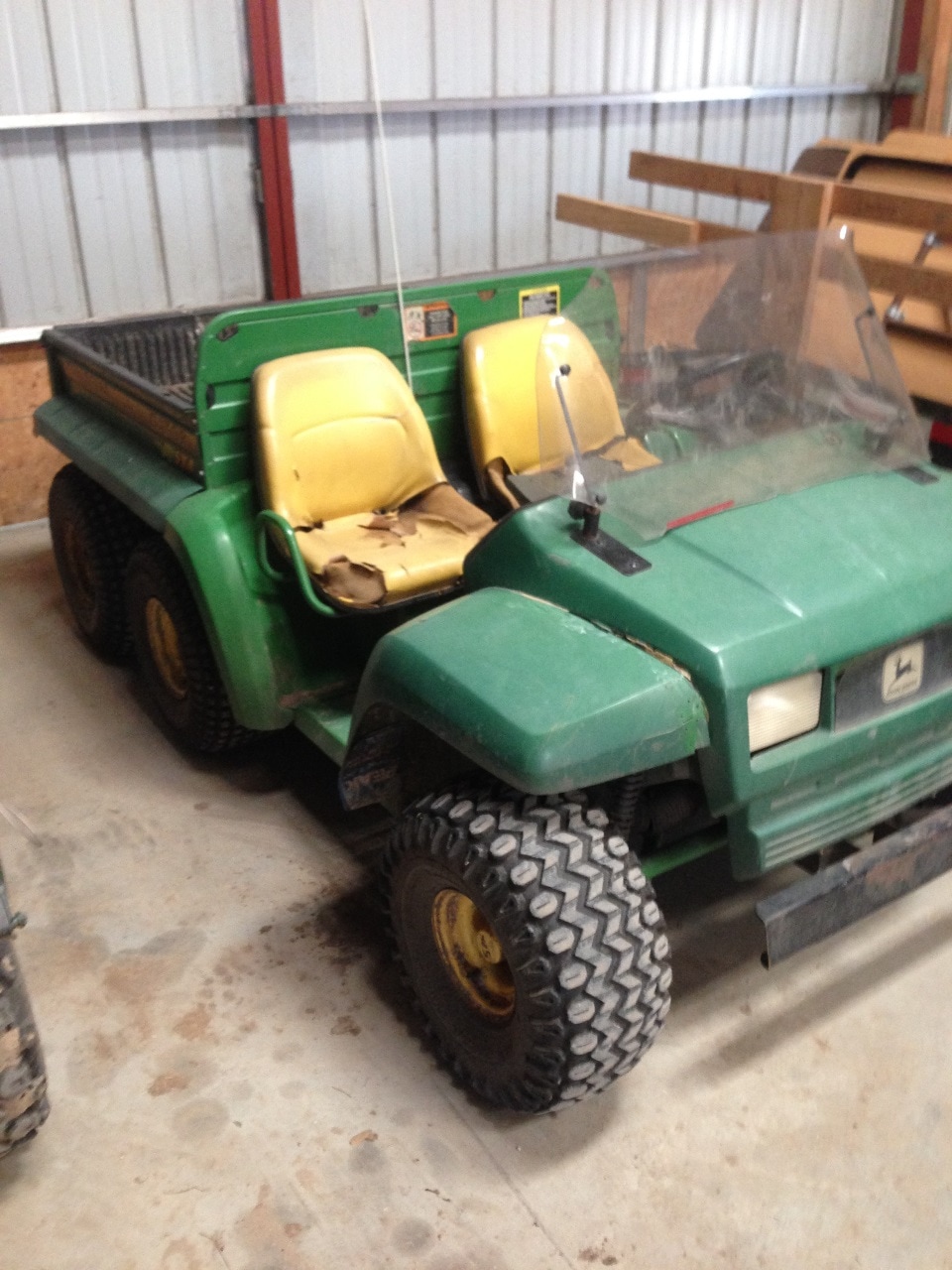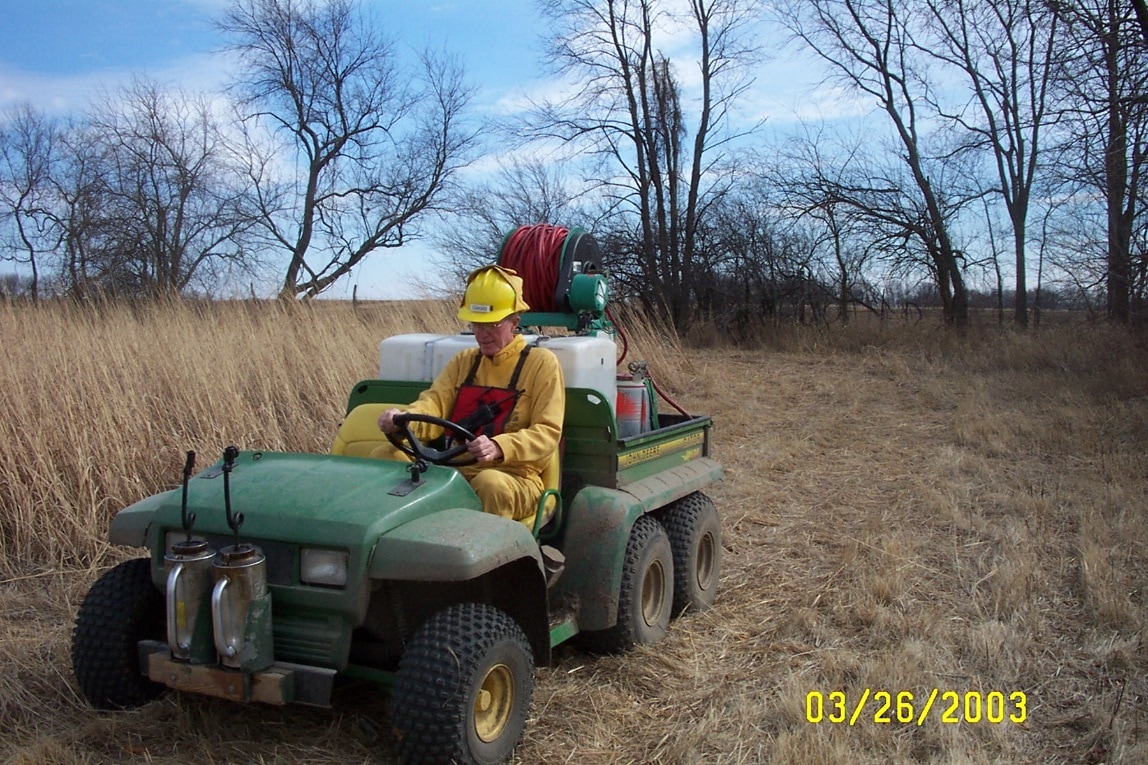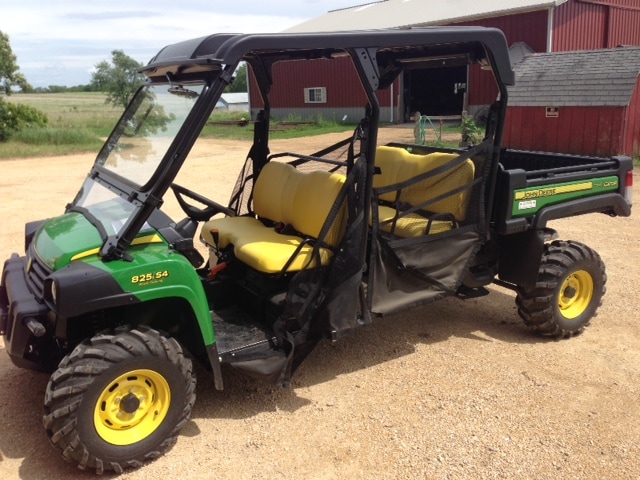How to Prevent Ruts in Nachusa's Lanes
Summary for Wet Season Driving
|
Think about the recent weather conditions before going out.
In our suburban environments with paved or gravel roads, we can drive anywhere any day. At Nachusa, if it is March through early June, or just a wet summer, or a thawed January, our ground can be water logged for weeks and the lanes prone to damage. Even if the sun is shining, if the ground moisture has not changed, then the lanes are still vulnerable. Fixing lanes is expensive. A deep lane rut is about $4-7 per linear foot to repair. How badly do you need to get out there? Do not drive a pickup truck on wet lanes. Pickup trucks have at least 7 times more ground pressure as our UTVs. If you add the weight of a bunch of passengers or a water pump, you really have a rut-making machine. |
Consider walking in.
Perhaps you can hike out with your scissors and bucket, or weed spade or squirt bottle. Or drive in part of the way and then walk. Perhaps those passengers can walk instead of ride. Maybe change the tour route you had hoped to do to save our lanes. Maybe park on the road and walk in. Or drive a sandy lane in and then walk. UTVs have a light foot print, but that ground pressure can still be too high for some wet lanes on bad days. Tell us when you see problem lane sections developing. Adding a little rock early is not expensive, works well, and is nicer looking than truckloads of rock later. |
|
Above we see an idyllic lane at Stonebarn Savanna (along the Bennett lane where it descends to Tellabs), with native plants growing right to its edge, and in the middle, descending, a gentle slope. Wild geraniums galore bloom along both sides and the trail looks like a nice hike. This lane is our featured hike in this unit so looking nice is good; it also functions as a track to move our stewardship vehicles
|
around, and as a fire break. This lane section does already have about four inches of rock added to stabilize the erosion prone soil on this hill.
When the ground is saturated, like it often is in spring and early summer, the lanes are vulnerable to damage. Once we churn through the soil and its vegetation roots we can create a soupy high-erosion substrate. Our high traffic lanes end up compressing into shallow depressions because we compact the soil, even if we have not churned up the soil. So the lanes turns into gentle ruts that then are the path of least resistance for rain water . . . and erosion often occurs. As erosion occurs the lane becomes deeper and wider over time. Ideally, we would add a little layer of the 2” rock just before the lane starts to erode to help stabilize it. We now own a used dump truck with a diverter that places the rock only in the rut, and not all the way across the lane. This saves a lot of rock and places it only where we need it. |
|
The photo above from several years ago shows a deep rutted lane at bottom of a wet hill in Tellabs. We filled this rut with 2” rock which lasted a few years. Then some recent pickup truck use rutted it back to quick sand. We just added 4-6” rock for a base and then we will cover it with 2” of rock when the ground dries. The cost of the repair is about $1,500.
|
This Sand Farm example shows how lanes can be the lowest point in an area and carry water and soil, eroding deeper. The answer is to rock the lane or stop using the lane. Where topography is right, the water can be diverted to the side before it picks up speed.
|
|
Here is a vegetated lane that had one or two passes with a pickup on the wrong day. You can walk along such a rut with your boot and push the sides back in before the soil gets dry and hard. This lane needs a modest amount of 2” rock to stabilize it.
Here is a freshly 2” rocked lane by Leopold. This lane slowly rutted over the years. The soils were erosion prone, with the ground often wet, and although the lane is flat, the ruts were 8 to 12” deep and wide. Vehicles were bottoming on the middle of the lane. Note the middle of the lane is barely rocked so vegetation there may emerge. The repair to this lane cost about $2,000, plus two full days of work. Now that we have a dump truck, we add a little rock to an eroding lane before needing a lot of rock.
|
We installed the diverter or chute to put rock in the driver-side rut. The skid loader, with its low pressure tracks, works well to load the truck.
Dick Gambrel helps us check bison fence, and places rock in the lanes. In 2016, we ordered in several thousand dollars of rock and we was rockin' for about ten days.
A few of these signs were installed on the west boundary to alert UTV drivers that the lanes ahead was typically impassable wet habitat. Hike only.
|
|
The winner of the low ground pressure is the old 6-wheel Gator. Super low ground pressure.
|
|
Thanks for working with us to protect our lane system so you can do good stewardship and science!
